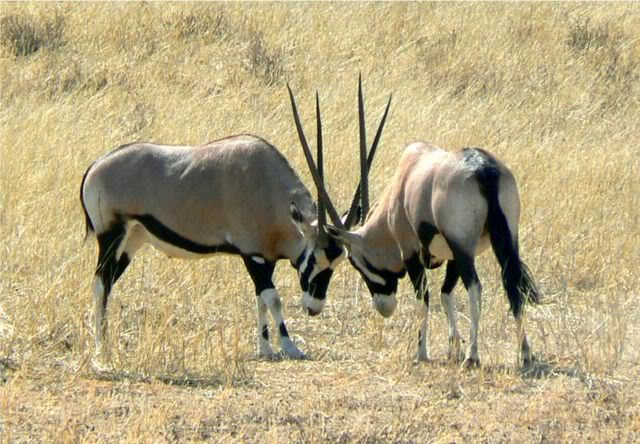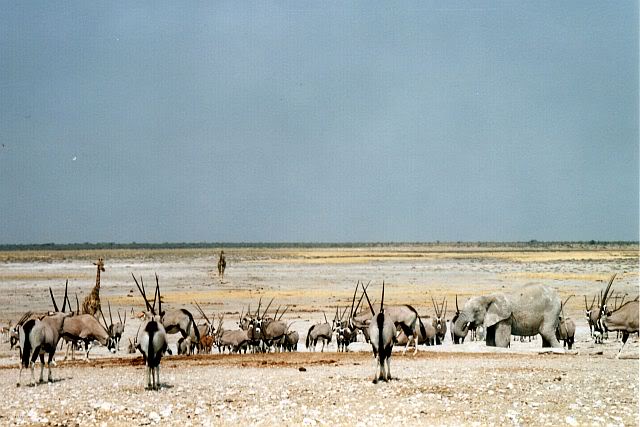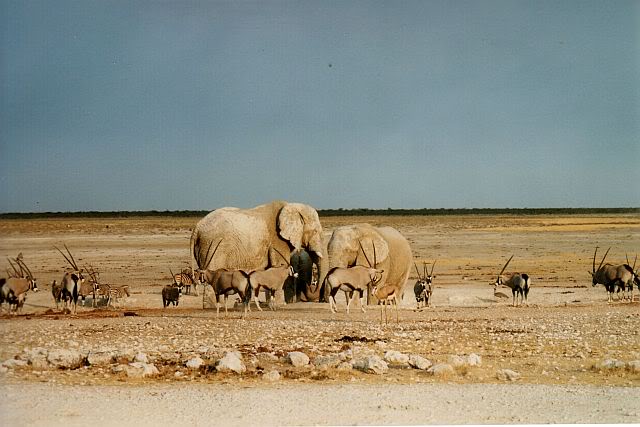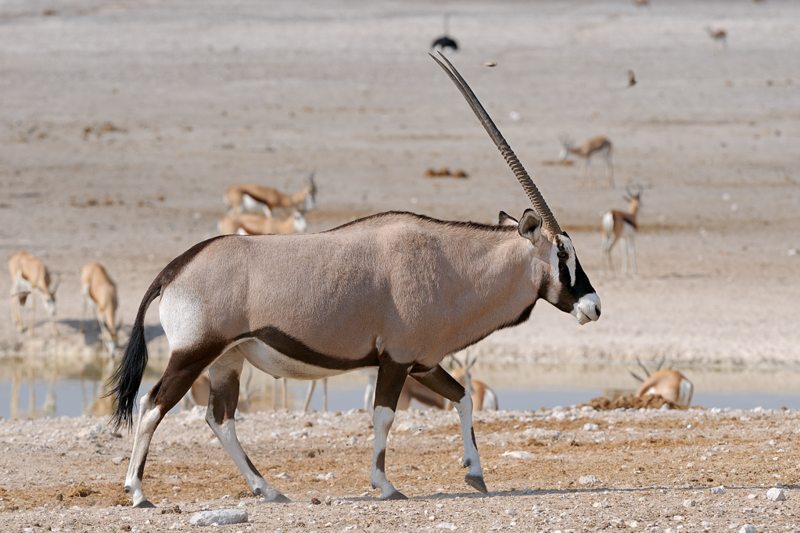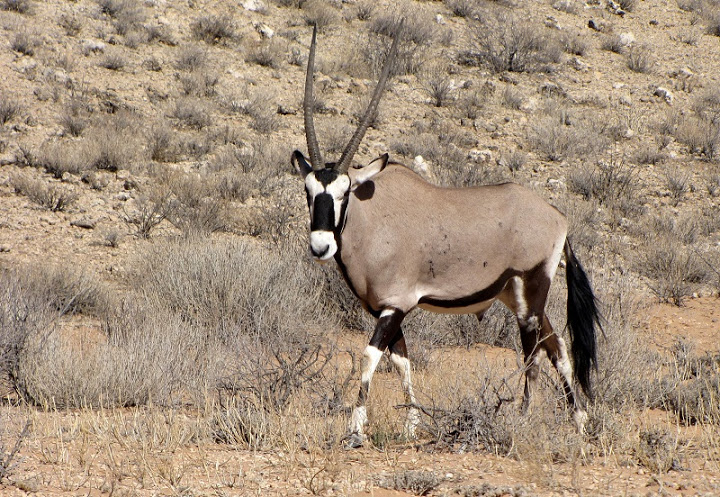Afrikaans: Gemsbok; Tswana: Kukama; Nama/Damara: Gaeb; German: Spiessbock; isiNdebele: inkukhama, ikukhama; isiXhosa: inkukhama; siSwati: inyamatane; Xitsonga: mhala; Tshivenda: noni; and in French : Oryx
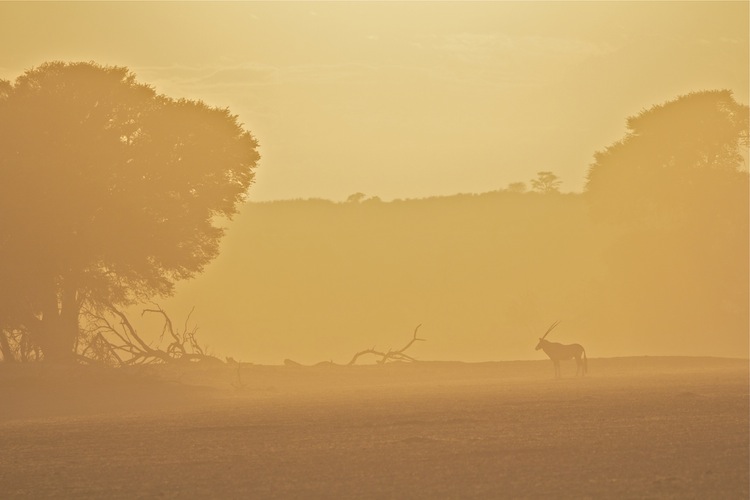
Distribution in South Africa
Gemsbok or Oryx were traditionally found in the northwestern and western parts of South Africa, which is the Northern Cape, Kalahari, North West and Western Cape.
In the present day, due to commercial game farming and through breeding and selling, they occur throughout South Africa on game farms. There are no Gemsbok in the Kruger National Park, but they can be seen in a number of other parks especially in the Kgalagadi Transfrontier Park, where they are its emblem.
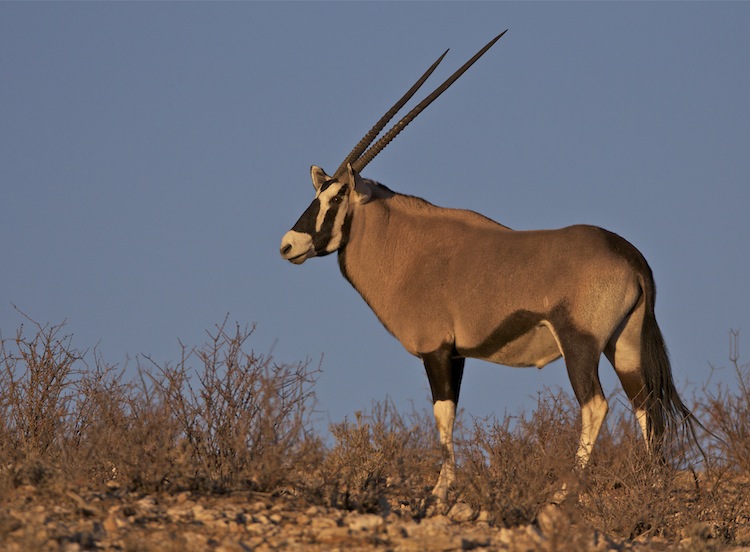
Habitat
Open savannah, dry plains and desert grassland
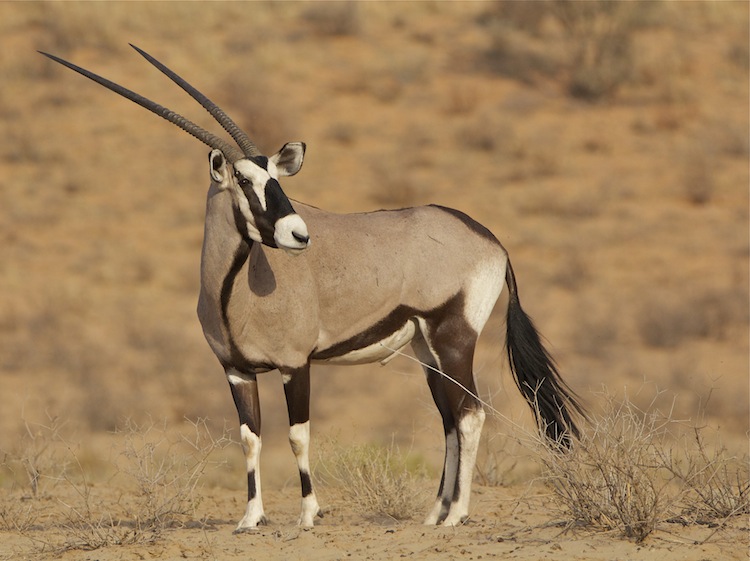
Gemsbok biology
The gemsbok is remarkably adapted to its arid environment. It conserves water within its body by lying in the shade during the hottest part of the day, and restricts activity to early mornings, late afternoons or the cool nights.
The gemsbok does not waste precious moisture on panting or sweating, but instead allows its body temperature to rise by a few degrees above normal on hot days. They are able to increase their body temperature to 45 degrees from 35.7 degrees C in order to delay evaporative cooling.
Diet - Herbivores
They are mainly grazers (grass eaters) but also eat pods of the Camel thorn (Acacia erioloba), small shrubs, and bushes. They dig up roots and bulbs, tsammas, and cucumbers from which they get moisture and thus do not need water often. They are fond of mineral licks.
Gemsbok may drink if water is available but can survive days or even weeks without it.
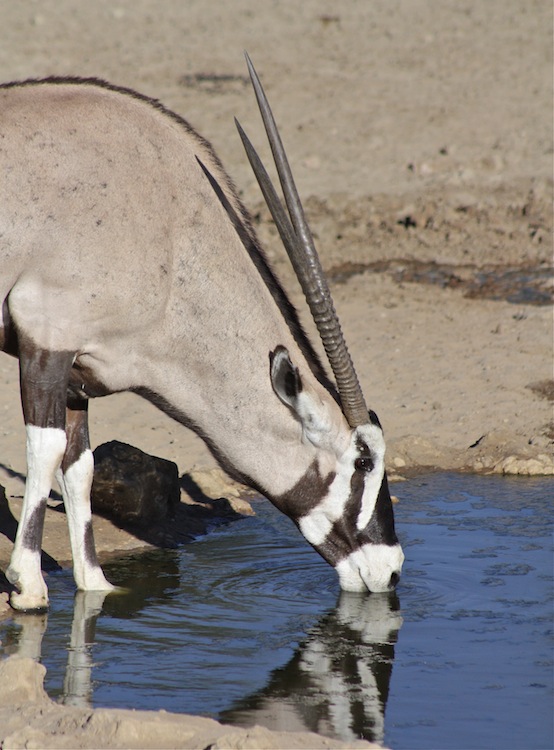
Plants growing in arid areas inhabited by oryx have also adapted to the hot, dry conditions and either store water or have mechanisms to prevent excess loss. Plants collect dew, gradually releasing it during the hotter parts of the day. Some plants increase their water content by 25 to 40 percent, so when oryx feed late at night or early in the morning, it provides them with both food and water.
Socialisation
Gemsbok are gregarious animals congregating in groups of 50 to 200, although the average number is 14. In larger groups you will usually find more females than males, but herds are mixed. A large proportion of males remain solitary and defend a territory.
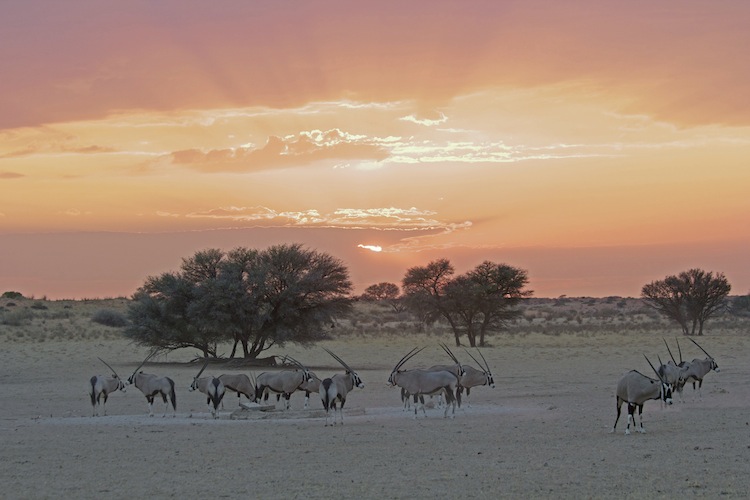



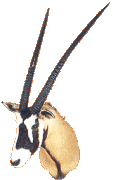 from your vacation?
from your vacation?